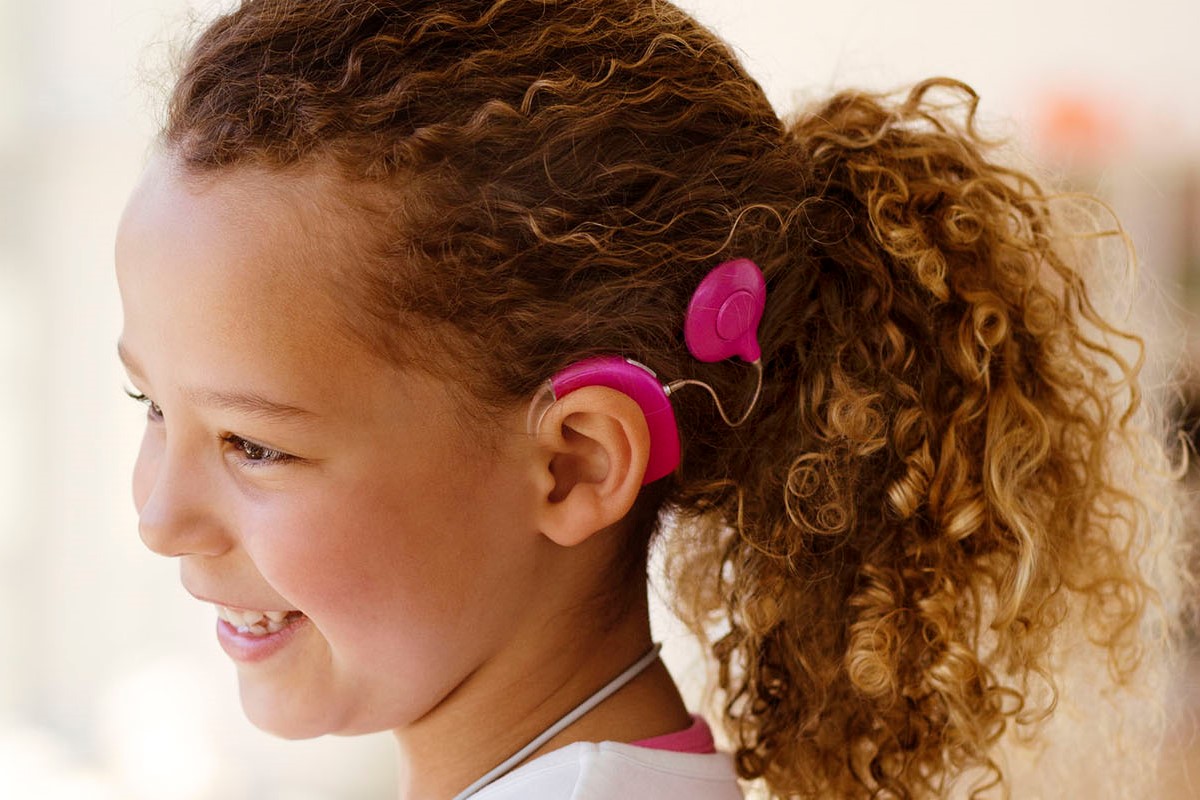
Cochlear implant in the child: the bionic ear as a response to severe or profound deafness
Also called bionic ear, the cochlear implant is a prosthesis indicated in patients with severe or profound bilateral deafness who do not benefit from traditional hearing aids
Commonly called bionic ear, the cochlear implant is a hearing prosthesis capable of completely replacing the function of the cochlea, an organ of the inner ear which converts sound waves into electrical impulses destined to travel along the auditory tract to the areas of the cerebral cortex responsible for decoding impulses and allowing sounds to be heard.
The cochlear implant consists of an internal and an external component
The internal component (implanted through surgery) is in turn made up of a very thin metal wire with a variable number of electrodes which is inserted into the patient’s cochlea, a body and a magnet which are positioned under the skin and a magnet , positioned above and behind the auricle.
The external component (similar to a conventional hearing aid) is represented by a language processor and a second magnet, connected to it via a cable.
The speech processor is a sophisticated device that receives sound information from the environment, digitizes it, processes it according to the instructions with which it was programmed and transmits it to the internal component through a radio frequency communication system.
The coupling between the two components (external and internal) takes place through the intact skin by attraction between the internal and external magnet.
The cochlear implant is indicated in all patients with severe and severe-profound bilateral deafness, present from birth or appearing during life, for whom hearing aids are not able to guarantee an adequate ability to hear the various sounds.
A child with profound deafness who does not receive a cochlear implant will most likely not have an adequate auditory-verbal communication channel and, therefore, will not develop an adequate language, and will have to adopt different communication strategies, such as gestural communication of Sign Language .
In order to use a cochlear implant, surgery under general anesthesia is required, performed by an otorhinolaryngology specialist with proven experience in ear microsurgery in the pediatric area.
It provides a small cut behind the ear, through which it is possible for the surgeon to access the inner ear (cochlea) to position the electrode wire.
The internal magnet is pocketed under the skin of the parietal region of the skull.
Once the surgical wound has healed (approximately 10-15 days after surgery) there are no visible signs on the outside and the child can resume all normal daily activities, including aquatic ones.
There is no lower age limit for the placement of a cochlear implant
Once the diagnosis of deafness has been established and the necessary tests have been carried out, in the absence of contraindications, the cochlear implant can be performed even before the child is one year old.
Generally, the time window between 12 and 18 months of life is considered ideal, when brain plasticity is at its maximum, i.e. the ability of the brain to adapt and change to the arrival of sound stimuli.
The cochlear implant has represented a revolution in the treatment of profound sensorineural deafness, both in adult patients who have lost hearing during their lifetime and in children born deaf.
By determining the total restoration of hearing, the cochlear implant allows the young patient to access all the environmental sounds necessary for the correct development of hearing and language skills.
This allows the child to integrate fully into everyday life.
Read Also
Emergency Live Even More…Live: Download The New Free App Of Your Newspaper For IOS And Android
What Tests Should Be Done To Check My Hearing?
Hypoacusis: Definition, Symptoms, Causes, Diagnosis And Treatment
Paediatrics: How To Diagnose Hearing Disorders In Children
Deafness, Therapies And Misconceptions About Hearing Loss
What Is An Audiometric Test And When Is It Necessary?
Inner Ear Disorders: Meniere’s Syndrome Or Disease
Benign Paroxysmal Positional Vertigo (BPPV): Causes, Symptoms And Treatment
Tinnitus: The Causes And Tests For Diagnosis
112 SORDI: Italy’s Emergency Communication Portal For Deaf People
Paediatrics, What Needs To Be Known About Childhood Otitis
Headaches And Dizziness: It Could Be Vestibular Migraine
Migraine And Tension-Type Headache: How To Distinguish Between Them?
Benign Paroxysmal Positional Vertigo (BPPV): Symptoms And Liberating Manoeuvres To Cure It
Parotitis: Symptoms, Treatment And Prevention Of Mumps
Acute And Chronic Sinusitis: Symptoms And Remedies


